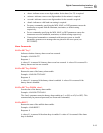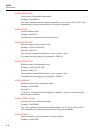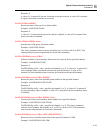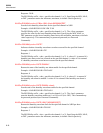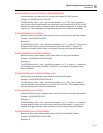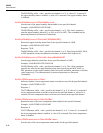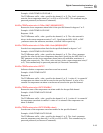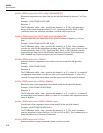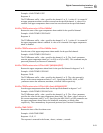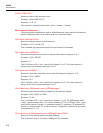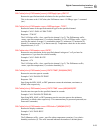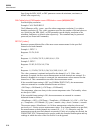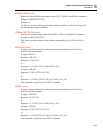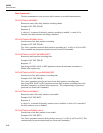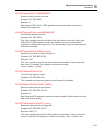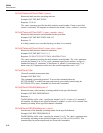
Digital Communications Interface
Commands 6
6-21
Example: ALAR:TEMP1:UPP?
Response: 0
The TEMPerature suffix, <chn>, specifies the channel (1 or 2). A value of 1 is returned if
an upper temperature alarm event has occurred on the specified channel. A value of 0 is
returned if an upper temperature alarm event has not occurred on the specified channel.
ALARm:TEMPurature<chn>:UPPer:ENABle?
Returns the state of the upper temperature alarm enable for the specified channel.
Example: ALAR:TEMP1:UPP:ENAB?
Response: 0
The TEMPerature suffix, <chn>, specifies the channel (1 or 2). A value of 1 is returned if
the upper temperature alarm is enabled. A value of 0 is returned if the upper temperature
alarm is disabled.
ALARm:TEMPurature<chn>:UPPer:ENABle <bool>
Sets the state of the upper temperature alarm enable for the specified channel.
Example: ALAR:TEMP1:UPP:ENAB 1
The TEMPerature suffix, <chn>, specifies the channel (1 or 2). The <bool> parameter
turns the upper temperature alarm on (1 or ON) or off (0 or OFF). This command may be
password protected (see Password Commands).
ALARm:TEMPurature<chn>:UPPer:LIMit? [MIN|MAX|DEF]
Returns the upper temperature alarm limit for the specified channel in degrees C or F.
Example: ALAR:TEMP1:UPP:LIM?
Response: 28.00
The TEMPerature suffix, <chn>, specifies the channel (1 or 2). The value returned is
always in the current temperature units (C or F). Specifying the MIN, MAX, or DEF
parameter returns the minimum, maximum, or default value respectively.
ALARm:TEMPurature<chn>:UPPer:LIMit <float>|MIN|MAX|DEF
Sets the upper temperature alarm limit for the specified channel in degrees C or F.
Example: ALAR:TEMP1:UPP:LIM 26.00
The TEMPerature suffix, <chn>, specifies the channel (1 or 2). The <float> parameter
specifies the value for the upper temperature alarm limit. The <float> value is always in
the current temperature units (C or F). Specifying the MIN, MAX, or DEF parameter sets
the upper temperature alarm limit to the minimum, maximum, or default value
respectively. This command may be password protected (see Password Commands).
ALARm:TIME:FIRSt?
Returns the time of the first alarm event.
Example: ALAR:TIME:FIRS?
Response: 15,43,13
The response is returned in the format, <hour>,<minute>,<second>.



